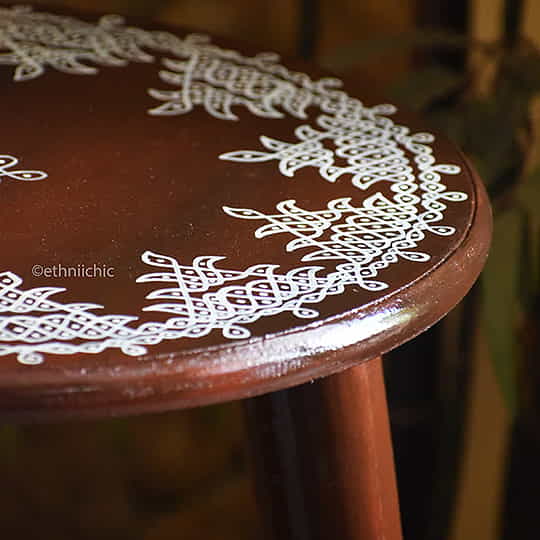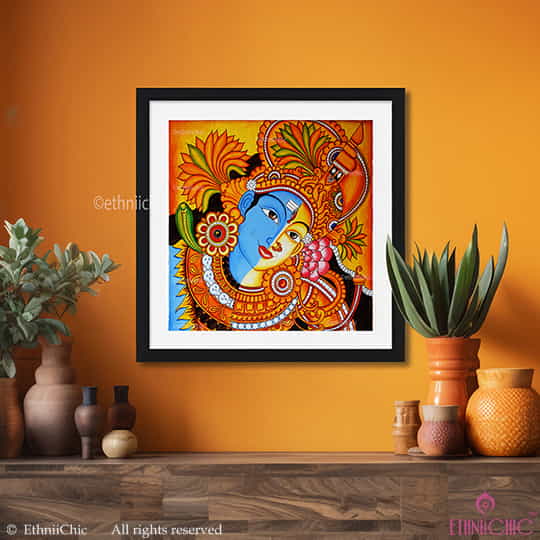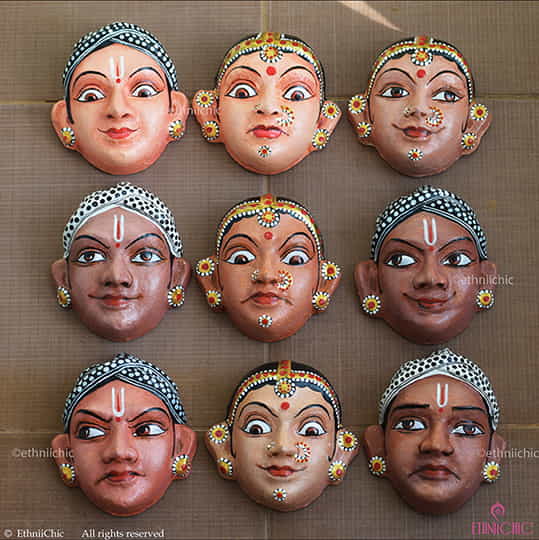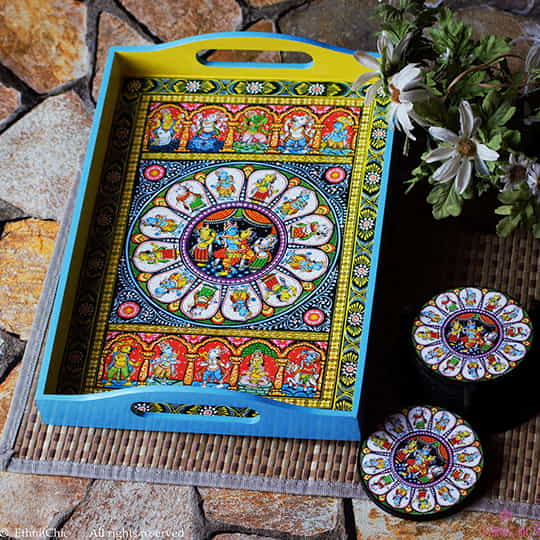Explore with us the rich history, meticulous process, and enduring themes of Palm Leaf Pattachitra, bringing alive a tradition that whispers through time
“Every leaf has a story,” my grandfather once told me as we sat under the swaying coconut palms of our village in Odisha. At the time, I thought he meant it metaphorically. Little did I know, some leaves truly do tell stories—etched with love, myth, and centuries of tradition. They are called Palm Leaf Pattachitras.
A Discovery Beneath the Dust
It began with a curious visit to Raghurajpur, a sleepy village tucked into the folds of Odisha, not far from the temple town of Puri. Known to connoisseurs as a heritage crafts village, it is home to generations of artisans. The air was thick with the smell of turmeric, incense, and earth. Cows ambled lazily. Children painted on slates outside mud houses.
It was in one such house that I met Guruji—an octogenarian artist, bare-chested and wrapped in a white dhoti, his fingers stained with ink. He sat on the floor beside a stack of dried palm leaves and welcomed me with a toothy grin.
“This,” he said, lifting a folded piece of brownish parchment delicately, “is our history, our scriptures, our cinema.”
He opened it like an accordion. My eyes widened. Each panel was a scene—figures so intricate they seemed to breathe. Gods and demons danced on slivers of time.
That was my first encounter with Palm Leaf Pattachitra, and I was captivated.
A Leaf from History
Palm Leaf Pattachitra (also called Tala Pattachitra) isn’t merely an art form. It is a legacy—one that stretches back over a thousand years.
Its roots lie deep within the cultural and religious history of Odisha and parts of Andhra Pradesh. Initially used as a medium for writing scriptures, Tala Patra (palm leaves) became the canvas for both words and images. In the ancient temples of Jagannath, artists began illustrating religious texts, creating visuals for the epics—the Ramayana, the Mahabharata, and especially stories around Lord Jagannath.
Over centuries, what began as a means of documentation evolved into a storytelling tradition—blending literature, illustration, and devotion. Entire family lineages dedicated themselves to this craft, passing the knowledge from father to son, from guru to shishya.
The Alchemy of Creation
Watching Guruji work was like watching a ritual.
First came the leaves—not fresh green ones, but seasoned, dried leaves of the talapatra (palm tree), selected carefully for flexibility and durability. They are boiled, dried in the sun, and pressed flat for weeks.
Then, using a sharp metal stylus called a lohankita, the artist begins engraving. No paints, no pencils. Just hand and eye and years of memory.
“We don’t draw,” Guruji laughed. “We carve.”
The stylus etches fine lines into the leaf, scraping away the surface. After the entire image is engraved, a mixture of lamp soot and castor oil is rubbed into the grooves. The leaf is then wiped clean, leaving behind dark, vivid lines that pop against the ochre of the palm.
Some pieces are left monochrome. Others are painted using natural dyes—colors made from stones, plants, and minerals. But even then, the palette remains earthy, loyal to its roots.
Themes: Of Gods, Demons, and the Human Heart
Palm Leaf Pattachitra doesn’t chase trends. It swims in myth.
The most recurring characters are Krishna, Rama, Durga, and of course, Jagannath—depicted in his unique wooden form, with round eyes and stumpy limbs. The stories are drawn from the Puranas, the Mahabharata, and the Ramayana.
But it’s not just the divine. Many Pattachitras tell folk stories, moral fables, astrological charts, tantric diagrams, and even erotic scenes. Some are Yantras—mystical diagrams meant for meditation. Others are horoscopes recorded for generations.
One rare scroll Guruji showed me depicted a Nabagraha (Nine Planets) chart. Another was a birth chart etched decades ago for a village child, long grown.
Raghurajpur: A Living Gallery
Raghurajpur is not a museum. It breathes. Every house is a studio, every wall a mural. Even the doors and utensils bear motifs—fish, lotus, conch shells, and geometric borders.
During festivals like Basanta Panchami and Rath Yatra, the village transforms. Children dip styluses in soot to scratch their first lines. Artists paint massive chariots and scrolls.
Even the young are learning. I met Babu, a 14-year-old who had already mastered miniature panels.
“One day, I’ll make a 108-panel Ramayana,” he said proudly.
Technology has made its way in. Some artists now use magnifying glasses and LED lights. They digitize their work, sell on Instagram, and conduct online workshops. But the essence remains rooted.
A Dying Art or a Resurrecting One?
Like many traditional crafts, Palm Leaf Pattachitra faced decline. With the rise of mass printing and factory-made decor, its intricate labor lost appeal. Many artists turned to other jobs.
But recent years have sparked a revival. NGOs, heritage tourism, and government efforts have spotlighted Raghurajpur. Urban Indians are rediscovering handlooms and handicrafts. There’s pride in heritage again.
Yet, the art needs more than likes. It needs patrons. Buyers. Believers. Listeners.
The Soul of the Scroll
As my time with Guruji ended, he rolled up a piece and handed it to me. It was a panel from the Ramayana—Sita in the Ashoka grove, Hanuman offering her Rama’s ring. The lines were so fine, I could barely believe they were hand-carved.
“Why palm leaves?” I asked.
He looked at the tree outside his hut. “Because they last,” he said. “Paper tears. Paint fades. But a palm leaf, if you care for it, will speak for a hundred years.”
Palm Leaf Pattachitra is not just art. It is memory — carved into nature, preserved by time, and told by hands that believe in the power of story.
If you ever find yourself in Odisha, take the detour. Visit Raghurajpur. Watch the artisans. Buy a piece—not just as a souvenir, but as a piece of living history.
Better yet, gift it to someone. Because nothing says love quite like a story carved into a leaf.





